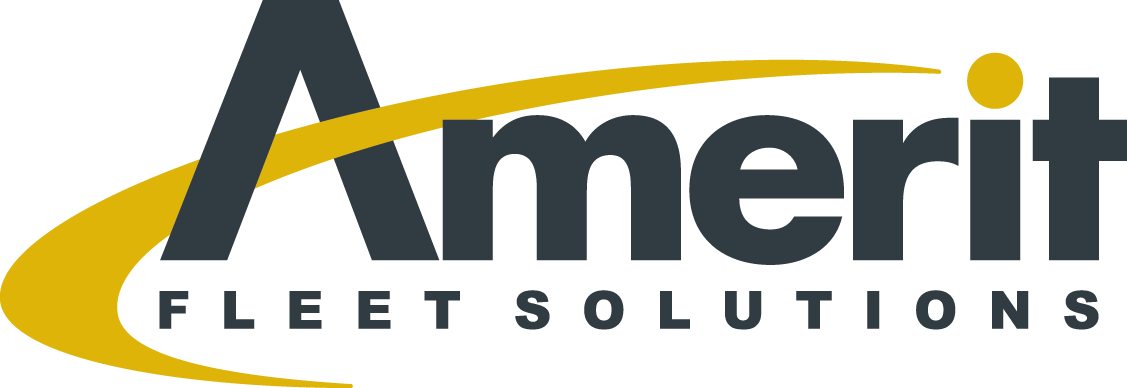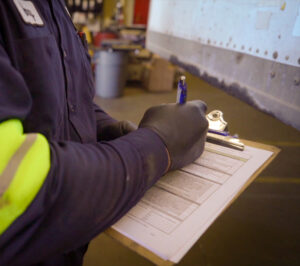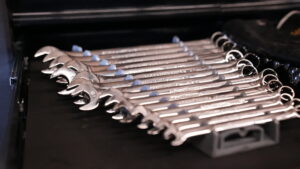According to fleet maintenance expert Amerit Fleet Solutions, third party maintenance providers must focus on clearly defined quality measures, total cost transparency, and fast turnaround times.
When outsourcing fleet maintenance operations, either for the first time or when searching for a new third party maintenance provider, fleet managers and senior executives should ask certain key questions critical to the selection process.
Leading Fleets magazine recently sat down with Dan Williams, CEO of Amerit Fleet Solutions, to talk about how to best assess third party maintenance providers. Amerit works with some of the largest fleets across the United States, providing dedicated fleet maintenance services that improve performance while reducing costs.
According to Williams, “Standardization, consistency, and efficiency breed cost savings.” These factors, among others, are key to an effective third party partnership. He also added that other critical areas include 100% accuracy and completeness in reporting, clearly defined quality measures and total transparency.
Williams advises fleet executives searching for a third-party maintenance provider to ask the following critical questions.
- How does the provider manage quality?
Organizations must find out how third party providers communicate expectations and ensure quality. Managers should ask for clearly defined quality metrics, as well as targets for key metrics such as preventive maintenance (PM) currency and out-of-service ratios.Williams advises that out-of-service ratios should be 3-5% and PM currency at 98-100%, depending on the asset class and the application.“Amerit views metrics differently to our competitors,” Williams explained. “We don’t negotiate to drive them lower; we believe metrics should be set as high as is realistically possible. It’s a philosophical difference that sets us apart and ensures the highest quality for our clients.” - Will the third party provide priority service?
How will the third party ensure turnaround times are as expeditious as possible? Are they servicing other customers as well as your fleet? How is work prioritized?“Ensure that your provider can clearly articulate how your work will be prioritized,” Williams stated. “For instance, wherever feasible, our technicians are dedicated to a single customer or a small group of customers. Your vehicles will never wait while we are servicing other customers.” - Does the vendor demonstrate cost transparency?
Third parties often make the majority of their money by hiding profit in areas other than direct labor costs, such as in the markup on parts, management fees, rebates from vendors, etc.Williams advises fleet executives know up front what they’re paying for and what they’re getting, as well as make sure the third party operates with integrity and provides full transparency with their services and fees.“We strongly believe that the foundation for a strong customer relationship is complete transparency. We will clearly and simply articulate how we earn our revenue, and we never have any hidden fees or rebates from our vendors,” Williams pointed out. - How does the maintenance provider handle the unexpected?
Within a fleet’s maintenance operation, there will always be periods of time when things go awry, from technicians quitting to severe storms. How can the third party flex its workforce during times of crisis to meet the fleet’s needs and ensure that the timeliness and quality are not impaired?“Amerit has a workforce of 1,500 techs across the U.S. We understand that periods of flex are a part of business,” Williams explained. “And we have a workforce and ability to meet those needs, even during crises and natural disasters.” - How does the maintenance provider attract, develop, and retain the best technicians in the industry?
How does the third party provider attract and retain the best technicians? Are they actively seeking and developing new channels with which to find talent?Effective recruiting, training, and career development means organizations can hire and retain the most talented technicians.“At Amerit, we invest heavily in training technicians and encourage them to obtain industry certifications,” Williams stated. “After training, we focus on making sure they stay with us through continual career development.”Amerit also recruits from veteran’s organizations and military bases. “We believe in veterans and lead the industry with 16% of our workforce as veterans,” Williams stated. - How will detailed information on all services be captured?
What type of technology does the third party utilize? How do they ensure 100% complete and accurate data? How do they train technicians on effectively using these systems?“Fleet organizations can’t accept anything less than 100% accuracy and completeness on everything they do,” Williams said. “Without it, you don’t have complete data, and you won’t be able to use the data effectively to make critical decisions about your fleet.” - How will the third party manage the transition?
If in-house maintenance is being outsourced for the first time, and if existing technicians are being retained, the third party must effectively manage communication and maintain stability among technicians between the time of announcing any changes and the time the new vendor is ramped up.“You don’t want your good techs taking new jobs because they don’t know the future,” Williams said. “You must keep the quality and legacy of the employees intact.”For instance, Amerit has a special team that works onsite with technicians, explaining processes in detail, including providing information on benefits packages, answering technicians’ questions, and taking a proactive hands-on approach to the transition. - How does the provider manage safety and risk?
How does the third-party provider ensure techs work safely and your assets are protected? And how does the vendor handle inherent risks in the industry, including liability issues?“We’ve found that we can provide enhanced safety and minimize risk through positive communication, benefits, and a focus on safety,” Williams explained.Each of Amerit’s employees works with a dedicated HR generalist with whom they interact constantly. The company also invests heavily in safety and risk training at the garage level, as well as through Internet education. - How does the third party ensure consistent, standardized work processes and policy for all vehicles?
Can the vendor ensure that PM schedules are consistently maintained, especially if the fleet operates across multiple locations? Is the approval level for parts purchasing consistently adopted? Are all assets being maintained the same way?“Amerit is the only company that is a dedicated fleet maintenance company with a national presence and that can offer a single, consistent, national solution,” Williams said. “Our uncompromising dedication to quality is at the heart of everything we do. It’s not enough to just do what’s required. We must exceed what’s required and delight our customers.”According to Williams, large fleets should not accept anything less than exceptional performance across the board. - How will the third party bring continual quality improvement and cost reduction to the fleet?
What type of improvements and cost savings will be made after the first year? Does the third party do more than just fix vehicles? Do they constantly bring new ideas to the fleet and offer to be a part of implementations and solutions?Amerit’s exposure to the largest and most sophisticated fleets in the country has resulted in significant learnings over the years.“While we would never violate customer confidentiality, it is our job to bring new ideas and solutions to our customers and be a part of the implementation of those ideas,” Williams said.




